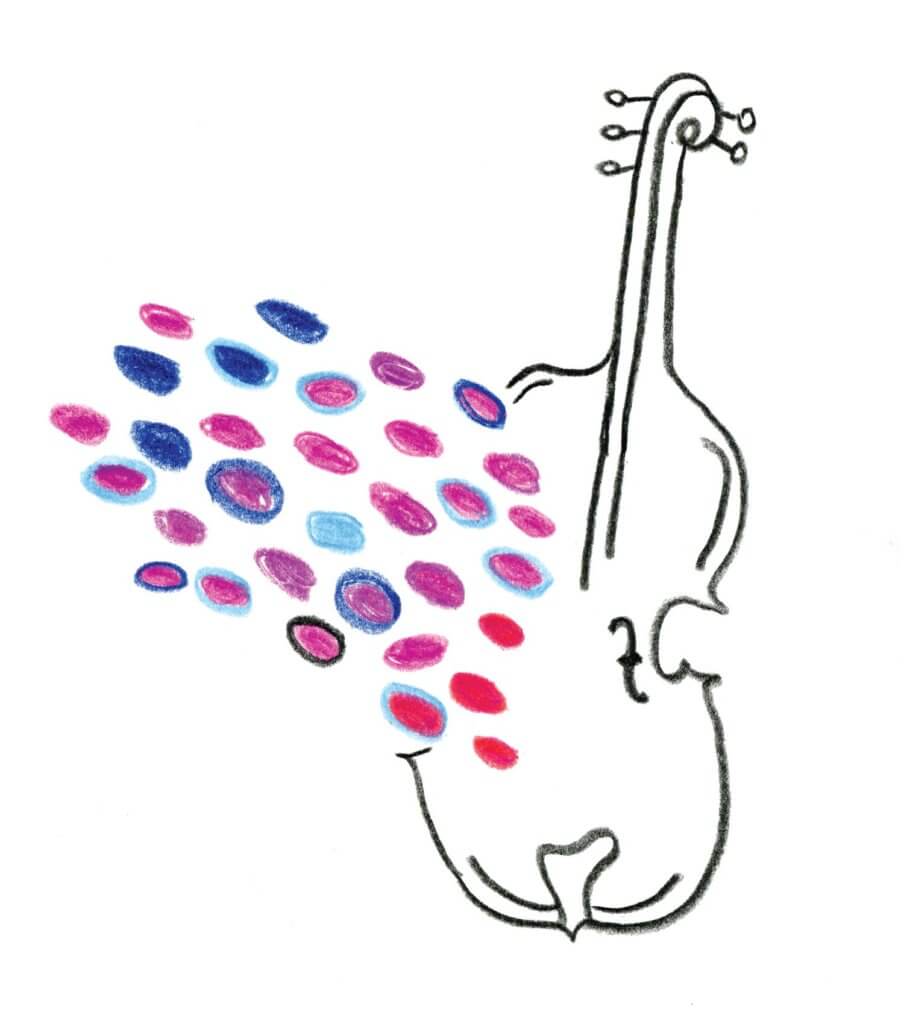Ensemble performs varied range of 20th century chamber music

The End of the Beginning Faculty and Guest Recital featured a unique combination of musical instrumentation and soundscapes, creating an intimate evening of chamber music in Brunton Auditorium. Last Friday, Mount Allison music professors Karin Aurell (flute), Joel Cormier (percussion) and guest double bassist Andrew Reed Miller presented a varied program of late 20th-century chamber works.
Aurell noted that the five composers whose work was featured represented four different countries, although what was common between them was that their musical material used traditional elements from their native lands. The theme of the concert was inspired by the beauty of nature, in particular here in Sackville, where one can enjoy observing the stars at night, and this feeling was well replicated throughout the program.
“Each piece of music was so different from the others that it is difficult to describe them altogether,” said Morgan Lynch, a first-year voice student.
The concert opened with Miramichi by living composer W. L. Altman, a former Mt. A composition professor. The work seemed to be focused and based on rhythmic intensity rather than melodic phrases. Instead of the flute presenting the melody and the double bass laying the foundation, the percussion played a larger role in driving the rhythmic nature and energy of the work.
The next set involved Miller’s take on movements from Astor Piazzolla’s Histoire du Tango, originally for flute and guitar. In both Cafe and Nightclub, the element of the tango style and rhythm was evident, and was successful in grasping the trend with tango, which the ensemble described as music which has transitioned to a style that you listen to with pleasure, not just dance to. This was enhanced through the unique blending of the marimba and double bass sound in Cafe, as well with the back-and-forth tempo changes in Nightclub, allowing for interesting changes of colour and tone throughout.
The middle work on the program, Toward the Sea, featured themes from Herman Melville’s Moby-Dick. In its first movement, The Night, one could immediately sense the ethereal and mysterious atmosphere created by the darker tone quality in the flute. The pattern of the notes E flat, E natural and A natural occurring throughout, often transposed to different pitches, added another layer to the serene mood of the movement. The second movement, Moby-Dick, created a similar stillness, although with a more meditative approach and lots of sustained flute notes throughout. The final movement, Cape Cod, had more moving lines for the flute, although the overall peaceful character was still maintained.
All three movements ended delicately and exposed, and it was particularly impressive to see how softly the marimba tone could be executed.
The second last piece, which I found to be one of the more intriguing works on the program, was Ciel étoilé, by Kaija Saariaho. Continuing along with the atmospheric theme, Cormier encouraged the audience to be in the moment while listening, and to pay attention to the character of each note. The majority of the work is sustained notes with silences in between each gesture. Through this, a very extensive range of of soundscapes emerged from the music.
“I love the sound world that created in the Sarriaho,” said Joseph Fitzner, a fourth-year composition student. “The different timbres created with various extended techniques in both the percussion and the strings were a really effective way to communicate the independence of different stars.”
The final piece, Aubes ou Initial by Gilles Tremblay, was another engaging work on the program, a fitting way to end such an explorative evening. This work featured unique instruments such as the bass flute, as well as various percussive instruments and devices such as the vibraphone, tam tam, a gold cup to glide on the cymbal and a rubber ball head mallet for the gong. The distinctive hollow timbre of the bass flute was striking in the opening, coinciding with the airy tone of the double bass playing in a high tessitura. The bass flute and double bass appeared to be in a duet with each other frequently, while the percussion was adding its own musical texture to the soundscape. The use of the gong rounded out the ringing of the mixed sounds from various percussion instruments in combination with the bass flute and double bass. Near the end, it almost sounded like overtones were coming out of the soundscape created.
All three musicians were equally at home performing this challenging repertoire. You can frequently find them performing with various chamber ensembles both locally and abroad.
“There is something about listening to different eras and genres of music that you don’t necessarily listen to regularly that is really valuable, and I’m so glad that Mount Allison makes those opportunities possible for its students,” said Lynch.





